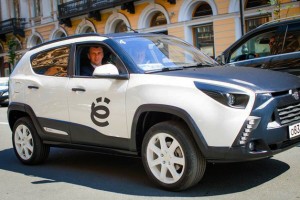A Contributed Post: Seven Tips for the Environmentally Conscious Driver

1. Reduce Engine Idling Time
Next time you’re dropping someone off, waiting at the junction for a train to pass, or just sitting in static traffic, shut down your engine until you are ready to move again. Unless you’re driving an ancient relic of a car, stopping and restarting your engine will not consume more petrol and will greatly reduce your carbon emissions.
2. Use the Nearest Parking Spot Possible
Too often, you’ll find people driving around searching for the cheapest deals on parking fees. However, each additional minute of driving means more carbon emissions into the atmosphere. The most sensible thing to do is to station your vehicle near a spot and wait for people to move their vehicles.
3. Turn off the Air Conditioning
Running your car’s air conditioner uses extra petrol and it’s always better to use it sporadically. As a tip, you could switch your air conditioner off somewhere around 5 to 10 minutes before you reach your destination. In the meantime, you can leave the fan on to circulate cool air into the car.
4. Drive Slowly
If you slow down and drive moderately, you can reduce your car’s emissions by as much as 20%. To reduce your engine’s output, accelerate moderately and use your brakes wisely. To avoid pounding the accelerator and slamming the brakes constantly, always be aware of the traffic around you. And whatever you do, always remember to keep within the speed limit.
But in order to understand speed limits, good knowledge of signalisation is a must. Resources like Toptests offer many free tests on signalisation that will allow you to make better sense of speed limits in different zones. For more information on the Highway Code, click here to visit toptests.co.uk.
5. Inflate Your Tyres Properly
Under Inflated tyres can increase your car’s fuel consumption by as much as 6%. Low pressure in your car tyres mean low litres per mile and reduced tyre efficiency. You should therefore inspect your tyres at every opportunity to ensure that they are properly inflated before driving off.
6. Maintain Your Car
A well maintained car will prove more economical compared to a poorly maintained one. The engine should always be topped with oil, which ensures proper lubrication of the internal components. Always ensure that your car is serviced according to the manufacturer’s schedule.
7. Skip Gears
When conditions allow, you can skip gears in order to save fuel. For instance, if you shift to the fifth gear from third, your transmission will not be overworked and you can save petrol. Similarly, when you’re slowing down, you don’t have to go through all the gears in turn. The highest gear should be used on roads and conditions that allow.
If you can follow the above tips, you can reduce your carbon footprint and play your part in protecting the environment and also save money in the process. Simply put, eco-driving should start making small changes to the way you drive in order to reduce the impact your driving has on the environment.

Comments
2. Use the Nearest Parking Spot Possible
I am amused when I grab the first parking place and enter the store while someone else is still driving in circles looking for a closer parking place. Except for disabled people, it makes no sense to waste time looking for a closer parking place to avoid walking a few more feet.
5. Inflate Your Tires Properly
If possible, get a plug-in electric air compressor for your garage. They don’t cost much and will make it more convenient to keep the tires properly inflated.
7. Skip Gears
Usually don’t skip gears! If you skip gears, you will have to go faster before shifting to a higher gear to avoid lugging the engine after shifting. However, if you have to accelerate quickly, by the time you shift you may be going fast enough to skip gears without lugging the engine. In fact, if traffic requires rapid acceleration, by the time you get up to the required speed in 2nd gear, you may even be able to shift directly to 5th gear. But usually, you should not skip gears. Upshift as soon as you can without lugging the engine or losing needed power.
One of the worst things for fuel efficiency is to drive in a lower gear than necessary. For example, some people never use 5th gear in city driving, even if they are driving fast enough to use 5th gear. Using the highest gear possible without lugging the engine will require more shifting because you will more often need to shift to a lower gear if you slow down slightly. However, using the highest gear possible will save fuel and, if you are concerned with fuel efficiency, it is worth the extra effort.
When you slow down, don’t wait for the engine to protest before you shift to a lower gear. Be aware of the lowest reasonable speed in each gear instead of waiting for the engine to protest before downshifting.
Try to reduce car usage by doing several things on the same trip.